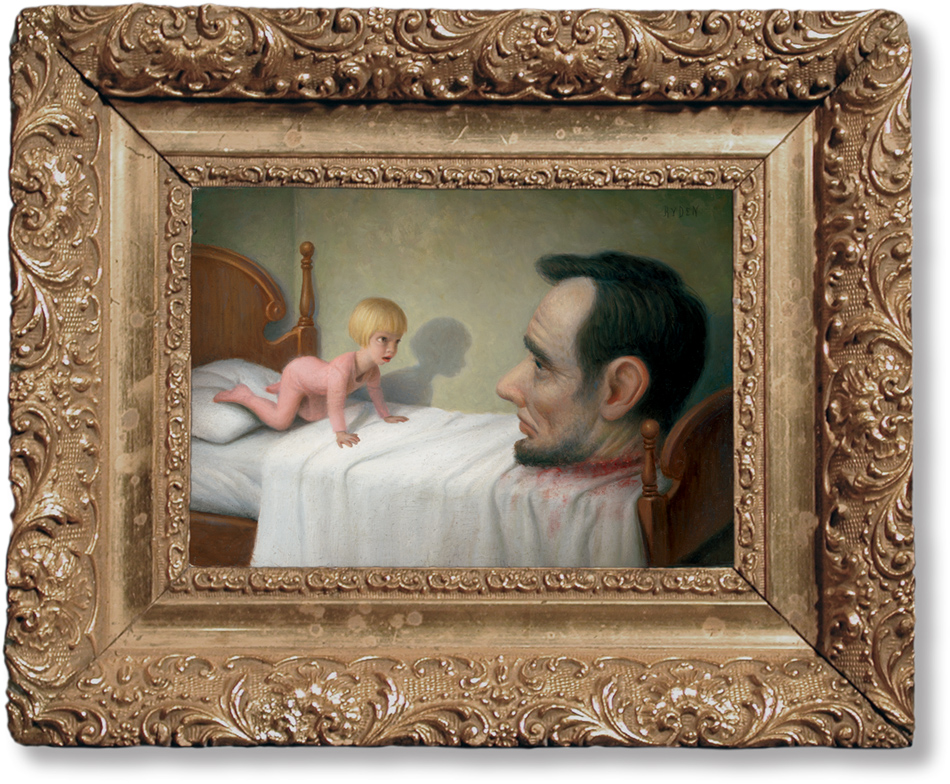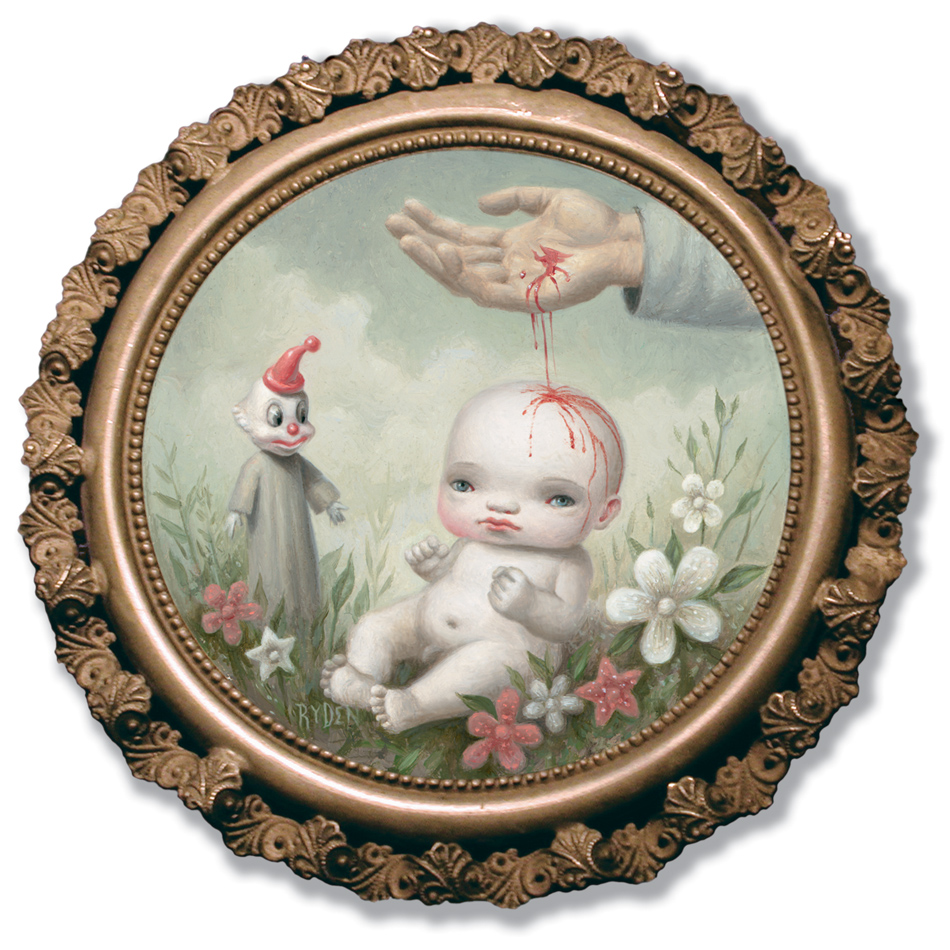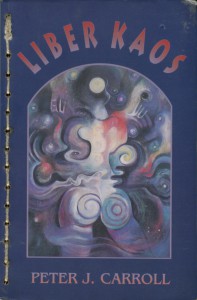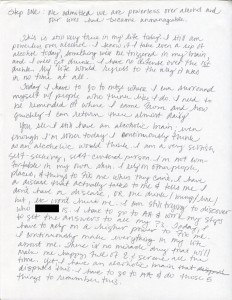Book: Blood: Miniature Paintings of Sorrow and Fear
Artist: Mark Ryden
Type of Book: Non-fiction, pop art
Why Do I Consider This Book Odd: Lincoln’s head.
Availability: Published by Porterhouse in 2011, you can get a copy here:
Comments: I am not a particularly visual person, though I do have preferred aesthetics. When left to my own devices I prefer Scandinavian home decor styles because they are easy to clean and I like my art bright, pretty and sort of creepy. The latter explains my affection for Mark Ryden, and hopefully will explain my complete lack of artistic vocabulary when I discuss art. I’m only at more of a loss when I try to discuss architecture or any form of math. I one day hope to be a Mark Ryden completist, book-wise. I want to accomplish the same thing with Edward Gorey – his works and works about him – and Henry Darger. It occurs to me that all three of these artists share similar themes – children in potential peril and unsettling situations, pretty illustrations, macabre content, elaborate styles, and just creepiness in general.
Mark Ryden’s paintings feed directly into the part of my psyche that loves nightmarish beauty without consequence, the surrealist nature of dark dreams. There is a catharsis for me when I view most of Ryden’s paintings. My interest in extremity leads me into some dark places – my love for Peter Sotos is an excellent example. But sometimes the impact of horror is hard to stomach. Not so with Ryden’s paintings.
Sometimes his subjects show sadness, such as the girl on the cover of this book. She is weeping blood and looks very somber. But even when his paintings, typically pictures of little girls, encounter the frightening, the gory, the miserably surreal, they seldom show fear. At worst the girls show morbid curiosity, maybe some trepidation, but there is no fear in Ryden’s work. The introduction to this book describes these paintings as showing a loss of innocence and that may be true. But if there is a loss of innocence, it is one that is expected, one that is not miserable to those losing their innocence because the children maintain their wide-eyed beauty even as they are confronted with the dreadful and disgusting. I can look upon lovely, big-eyed children covered in blood or encountering slabs of bloody meat and enjoy them for the absolute beauty in the image, for Ryden’s paintings are always lovely. They are always sumptuous, in colors that are so vivid that they almost evoke the sense of taste for me. This is interesting to me because even though much of Ryden’s work is associated with blood and meat, the bright pinks and various pastels evoke old fashioned, boiled-sugar candy. Taffy. Cotton candy. Not fetid, iron stink of meat. For whatever reason, I don’t experience the loss of innocence the way that I suspect others do when I look at Ryden’s work. (You see the intense use of pastels most especially in Ryden’s The Meat Show collection.)
Blood is a tiny book, a fitting size because the paintings are all miniatures, and I selected it to discuss during my Halloween post-a-thon because this book contains an explanation for why Ryden engages in such morbidity, almost a defensive apology for what makes him tick and his explanations, in the introduction as well as a quote later in the book, show in action one of the warnings I often give writers: once you create, the creation is out of your hands and you have no control over what your work will mean to others. By his own words, Ryden would likely find my inability to find his works alarming, especially those in Blood, somewhat alarming itself. Ryden says:
Blood is very powerful. While meat is the substance that keeps our living souls in this physical reality, blood keeps our meat alive. Blood is liquid life. When blood escapes our bodies we are alarmed to the very core of our brains. It is life leaking out of us. It is frightening and makes red a profoundly intense color.
It is here that I think shows the chasm between Ryden’s intent and my experience with his work. If blood is liquid life, seeing children interacting with blood is alarming but it is also a transformative experience. But girls are used to blood in a way boys aren’t. We literally see our blood escaping our body several days each month. It’s less a loss of innocence than a symbol of coming-of-age. There are biblical instructions about the corruptibility and disgusting nature of menstrual blood but for many women seeing blood outside the body is not alarming and when it happens it is simply a sign of growing up. Perhaps this is why I am not appalled by the loss of innocence seen in the paintings in this collection. Blood is liquid life, but in some respects blood is a liquid proving-ground, a symbol of a trial endured, of obtaining a certain type of wisdom. Sometimes the wisdom that comes from corruption is more valuable than white, unblemished inexperience.
Regardless of the ins and outs of meaning and intent, the paintings in this collection are remarkable in content and execution.
 I love this painting, titled simply enough, Lincoln’s Head. There’s a lot going on with this painting, and it can be tempting to write it off as kitsch. I’m not the least bit startled by the blood or gore, and it’s not startling to me how meaningful this painting is to me. Ryden often paints Abraham Lincoln, with Lincoln performing an assortment of duties, like juggling with meat, birthing a baby from a tree, as well as serving as the focus in scenes not as easily summarized. In this painting, his head at the foot of the bed is reminiscent of the horse head in The Godfather, a sort of warning to the little girl. Yet Lincoln, as bastardized as he has become by pop culture, is an enduring image of freedom and sacrifice for most Americans.
I love this painting, titled simply enough, Lincoln’s Head. There’s a lot going on with this painting, and it can be tempting to write it off as kitsch. I’m not the least bit startled by the blood or gore, and it’s not startling to me how meaningful this painting is to me. Ryden often paints Abraham Lincoln, with Lincoln performing an assortment of duties, like juggling with meat, birthing a baby from a tree, as well as serving as the focus in scenes not as easily summarized. In this painting, his head at the foot of the bed is reminiscent of the horse head in The Godfather, a sort of warning to the little girl. Yet Lincoln, as bastardized as he has become by pop culture, is an enduring image of freedom and sacrifice for most Americans.
This child is one of the more shocked-looking Ryden children, and even so she is not terrorized by Lincoln’s head. She exhibits morbid curiosity but she is not afraid – just surprised to see him there. She is clearly a little girl, in her pink pajamas, but note the austerity of the room. No paintings on the wall, no bedside table, no stuffed animals, no patterns on the sheets. This is the room of an adult, white sheets stained with the blood of an American redeemer. Lincoln is a warning to her, that adulthood encroaches – red blood on white sheets is most definitely an image associated with loss of virginity. I almost feel like she is dreaming, that she fell asleep and has drifted down onto Lincoln’s bed, his severed head warning of impeding womanhood and the many sacrifices that are made one becomes an adult. This is a loss of innocence, certainly, but it is inevitable. Children grow up. It’s not a tragedy but the little girl’s face shows the alarm that genuine freedom as an adult can bring.
Or it’s a gory, fanciful picture of a little girl in a Shaker-style bedroom confronting a giant severed head. You make the call. In fact, I would love to hear other interpretations.

The Baptism of Jajo is my favorite painting from the Blood collection. Interestingly I have far less explanation for this painting than I do Lincoln’s Head and what little interpretation I have may suggest that I have not shucked away my Southern Baptist upbringing as much as I would like to think I have. Jajo is a baby exhibiting superlative innocence. He is plump, white, with a big round head, a large forehead and widely-spaced blue eyes. The hand of Christ is bleeding upon him and my first impulse upon seeing this painting was to think that the child was being protected by the blood of Christ, often represented as a lamb in Christian iconography, one of the most universal symbols of innocence. And that creepy clown toy looking on at the scene makes me think this baby really needs all the protection he can get (though later that is disproved by another Ryden painting).
Even as I read Ryden’s explanations for these paintings – he was in a very dark place when he painted the Blood collection and really wanted to paint bloody and disturbing scenes – I have such a hard time seeing the menace or fear. A fat baby in a field of flowers receiving a literal blessing from God. Many, myself included, find the very notion of Christian transubstantiation disgusting – the idea of drinking the literal blood and eating the literal flesh of Christ as a form of sacrament is disturbing. But this child is not drinking the blood but is rather receiving it in a sort of pagan/Episcopalian affusion baptism, on the top of his little head, the most fragile place on a baby’s body. It’s comforting even as it is relatively grotesque. Clearly I am not as divorced from faith as I thought, or at least from the feelings one experiences when seeing Christian symbols of salvation and protection. But I also marry the Christianity in this painting with my interest in other forms of metaphysics. The hand of Christ is palm out, so detailed you can almost read His future. There is a pretty strong life line on that palm, almost suggesting that Jajo will have a nice, long, protected life. That life line certainly can’t indicate Jesus’ own life span, so I think this is Jajo’s future spelled out on the hand. Additionally, Mr OTC noted how placidly Jajo is staring at the viewer, almost Buddha-like in composure. And why is the baby’s cheek red where the clown is staring yet white nearer the bleeding hand? Again, there’s a lot going on in this painting and I don’t know how to assign meaning to it all.
If you want to see all the paintings in the Blood series, visit Mark Ryden’s site. Dig around and have a look at some of his other collections. Jajo makes another appearance in The Meat Show in Jajo, Patron Saint of Clowns.
I don’t think it’s a coincidence that all the art I prefer is pop or low brow, or created by mentally unstable hermits. I’m not particularly well-trained to see beauty and truth in a visual format. I’m much better at interpreting words. So it’s all the more likely that I have absorbed these images in a manner that doesn’t honor artistic intent. But as with literature, I don’t think anyone needs to have a handle on absolute meaning to read Shakespeare or Stephen King or to enjoy paintings from Leonardo or Ryden. Sometimes all that matters is if you love something and I love the juxtaposition of seemingly unharmed children confronted with blood and horror. These paintings bring to me a sort of hope that the miseries of life are endured with a child-like resilience and that beauty remains in the face of the nastiest experience. That in the midst of the rot you smell the flowers and taste the pastel saltwater taffy.
In a way, despite the title of the book, this was the least Halloween-y book I could discuss but I didn’t really understand that until I wrote this entry. Here’s hoping my next entry is creepier.






